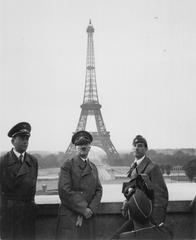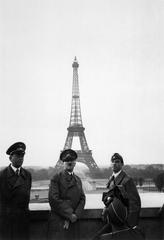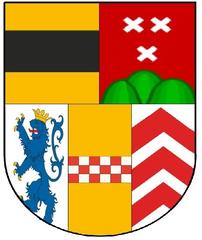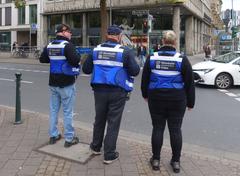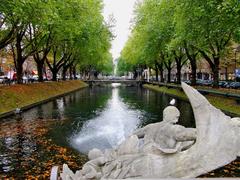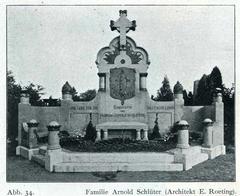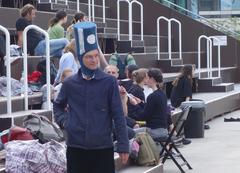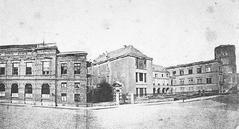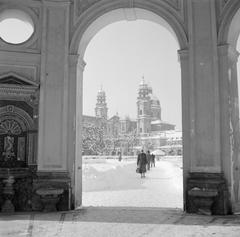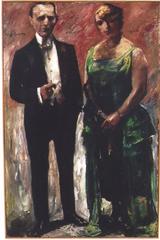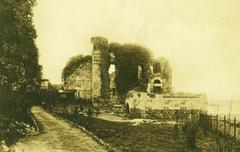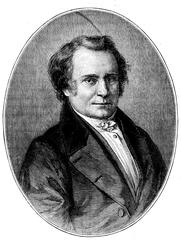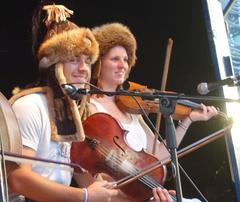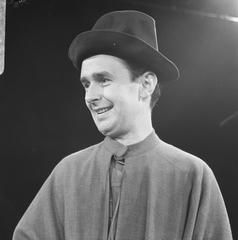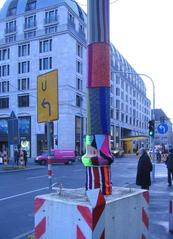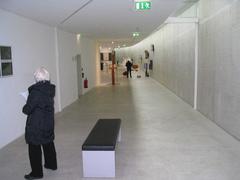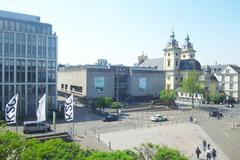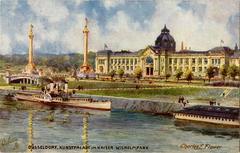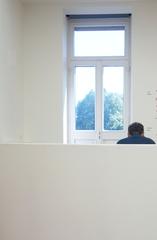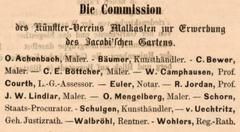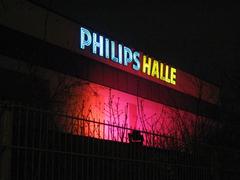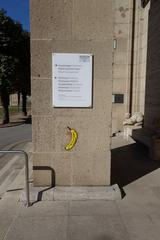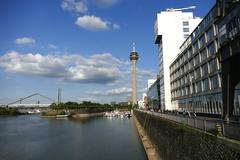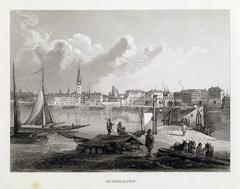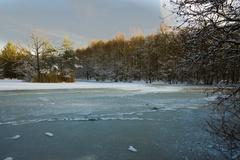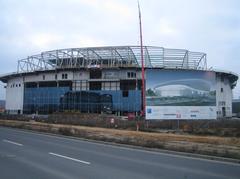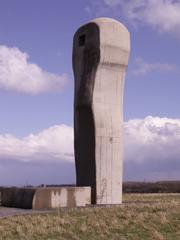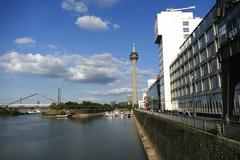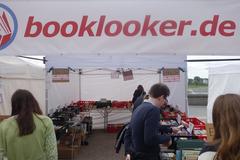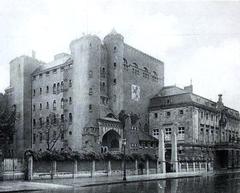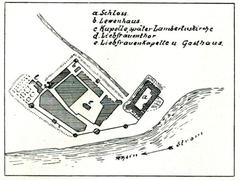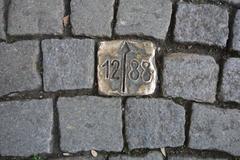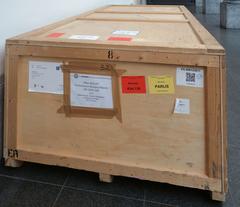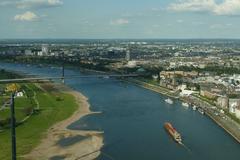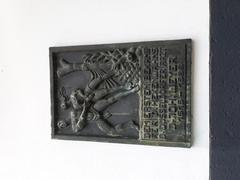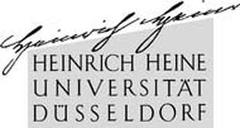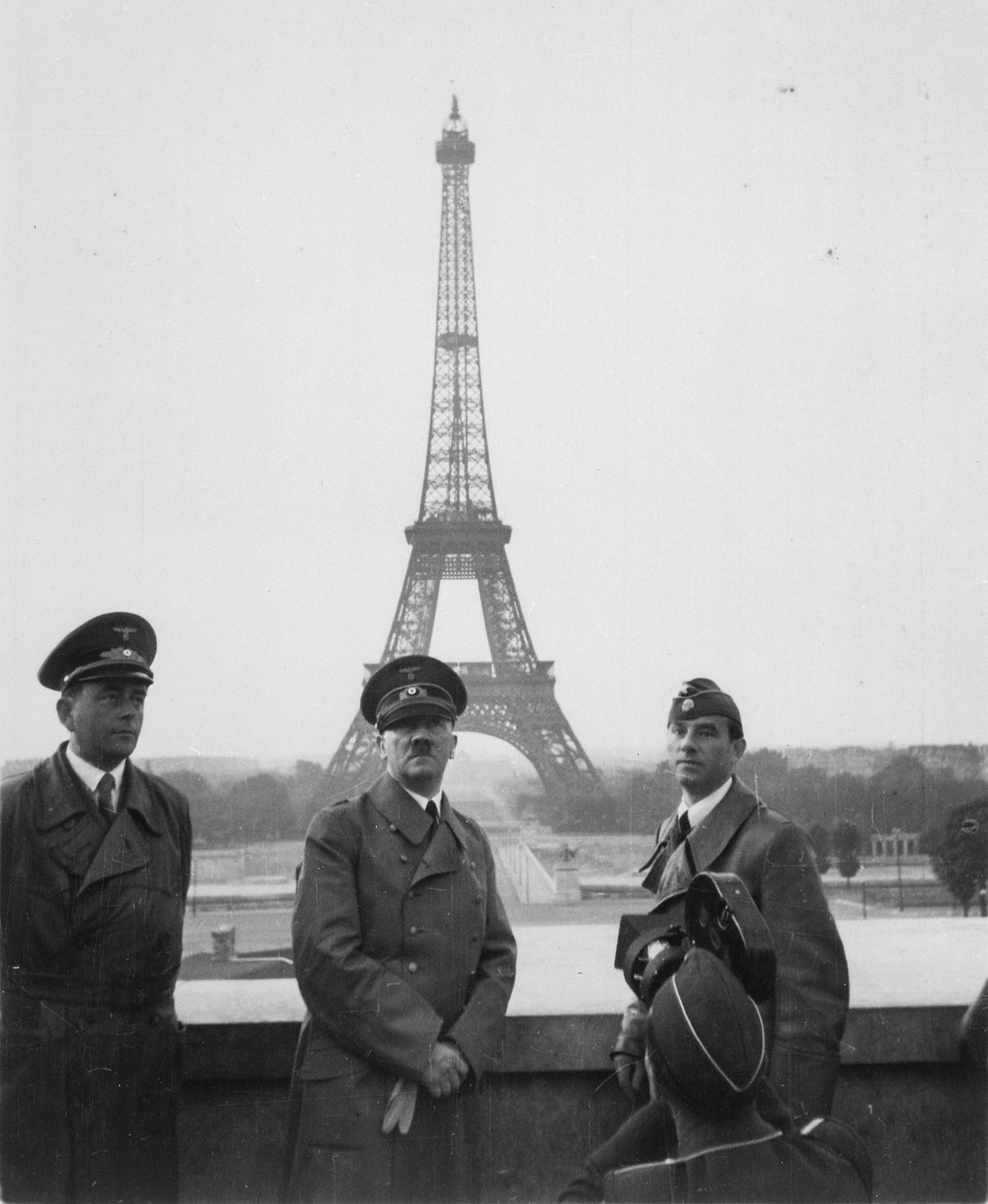
Arno Breker Sites in Düsseldorf: Visiting Hours, Tickets, and Historical Significance
Date: 14/06/2025
Introduction
Arno Breker is recognized as one of the most skilled yet controversial sculptors of 20th-century Germany. His neoclassical sculptures—characterized by monumental forms and idealized human figures—rose to prominence during the National Socialist period, symbolizing Nazi ideals of physical perfection and Aryan supremacy. However, Breker’s artistic journey extends well beyond this era: from his studies at the Kunstakademie Düsseldorf to international engagements, and culminating in his postwar legacy and deep-rooted ties to Düsseldorf.
This comprehensive guide is crafted for art lovers, historians, and cultural tourists keen to explore Breker’s complex legacy through Düsseldorf’s sites. It provides clear historical context, practical visitor information—including opening hours, ticketing, accessibility, and tour options—and addresses the ethical and cultural debates surrounding Breker’s oeuvre. Additionally, it covers the Museum Arno Breker at Schloss Nörvenich and offers insights into visiting his former residence and sculpture garden near Düsseldorf.
Plan your visit using interactive maps, audio guides such as the Audiala app, and local resources to gain a nuanced appreciation of Düsseldorf’s artistic landscape and its engagement with Breker’s legacy. (Museum Arno Breker; Visit Düsseldorf; Michael Z. Wise)
Table of Contents
- Early Life and Education
- Artistic Development and Early Career
- Paris Years and International Contacts
- Role in National Socialist Germany
- Postwar Years and Düsseldorf Connections
- Key Breker Sculptures and Art Sites in Düsseldorf
- Controversy and Cultural Significance
- Visiting the Museum Arno Breker at Schloss Nörvenich
- Visiting Breker’s Residence and Sculpture Garden
- Practical Visitor Tips
- FAQ
- Conclusion
- References
Early Life and Education in Düsseldorf
Arno Breker was born on July 19, 1900, in Elberfeld (now part of Wuppertal), Germany, the eldest son of a master stonemason (Lempertz). Early exposure to stonework inspired him to pursue sculpture, a passion solidified by seeing Rodin’s “The Age of Bronze” at the Düsseldorf Museum (Museum Arno Breker). After studies at Elberfeld’s Decorative Arts School, Breker enrolled at the Kunstakademie Düsseldorf in 1920, studying under Wilhelm Kreis (architecture) and Hubert Netzer (sculpture). While initially linked to the avant-garde “Das Junge Rheinland” group, Breker gravitated toward classical models like Rodin and Michelangelo (Biographs).
Visiting the Düsseldorf Art Academy
- Location: Kunstakademie Düsseldorf, Grabbeplatz 4, 40213 Düsseldorf
- Visiting Hours: Exhibition hours vary; check the official website
- Tickets: Most exhibitions are free; special events may charge
- Accessibility: Wheelchair accessible
- Highlights: The Academy’s architecture and exhibitions provide insight into Breker’s formative environment
Artistic Development and Early Career
Breker’s early work was shaped by both classical and modern influences, with travels to North Africa inspiring his “Tunesische Reise” etchings (DHM). He developed innovative casting techniques and began working on monumental sculptures. A pivotal commission was “Aurora,” a large-scale figure for the Ehrenhof complex in Düsseldorf (Lempertz).
Visiting the Ehrenhof Complex
- Location: Ehrenhof, 40213 Düsseldorf
- Visiting Hours: Outdoor areas open daily; museums within have separate hours
- Tickets: Outdoor access is free; museums (e.g., Museum Kunstpalast, NRW-Forum) charge admission
- Accessibility: Generally accessible
- Note: The original “Aurora” no longer sits atop the roof, but the Ehrenhof remains a testament to Düsseldorf’s interwar art scene
Paris Years and International Contacts
During the 1920s and early 1930s, Breker lived in Paris, befriending artists like Robert Delaunay and Man Ray (DHM). Winning the Rome Prize in 1932, Breker deepened his engagement with classical art, yet maintained a preference for neoclassical forms.
Role in National Socialist Germany
Breker’s style and ideology aligned with the Nazi regime, which embraced his sculptures as embodiments of Aryan ideals (Scribd). Appointed “Official State Sculptor,” he produced works for state buildings and the 1936 Berlin Olympics. Most public works were destroyed after WWII (Lempertz).
Postwar Years and Düsseldorf Connections
After WWII, Breker was acquitted in denazification proceedings and resumed his career in Düsseldorf from 1950 until his death in 1991 (Biographs). He participated in postwar reconstruction and created busts of notable cultural figures.
Visiting Breker’s Grave at Nordfriedhof
- Location: Nordfriedhof, Norbertstraße 90, 40489 Düsseldorf
- Visiting Hours: Open daily, daylight hours
- Admission: Free
- Accessibility: Wheelchair accessible
- Info: The grave is a site of art historical interest; please be respectful
Key Arno Breker Sculptures and Art Sites in Düsseldorf
Nordfriedhof and “Pallas Athene”
Breker’s grave lies in Nordfriedhof, alongside the “Pallas Athene” sculpture—an idealized neoclassical figure representing the Greek goddess Athena (duesseldorf-entdecken.de). The sculpture’s relocation to the cemetery followed an inheritance dispute (wz.de).
- Admission: Free
- Tips: Use the “Wo Sie Ruhen” app for cemetery tours
- Etiquette: Respect the site as an active cemetery
Museum Kunstpalast and “Aurora”
Museum Kunstpalast displays “Aurora” atop its roof, a testament to Breker’s technical mastery and mythological interests (wz.de).
- Hours: Tues–Sun, 10:00–18:00 (closed Mondays) (Museum Kunstpalast)
- Tickets: Adults €10, reduced €7
- Accessibility: Fully accessible
- Tips: “Aurora” is best viewed from outside; guided tours and audio guides available
Other Sites
Breker’s influence is visible in various city public and private commissions, including portraits of postwar figures. Some works are not publicly accessible (en.wikipedia.org).
- Info: Contact the Düsseldorf cultural office or official Breker website for updates
Controversy and Cultural Significance
Breker’s close association with Nazi propaganda renders his art contentious (publicsculptures.wordpress.com). Düsseldorf’s decision to retain and display his works reflects Germany’s commitment to confronting history, neither erasing nor uncritically celebrating the past.
Despite postwar rehabilitation, Breker’s continued commissions and exhibitions spark ongoing debate about the intersection of artistic merit, politics, and morality (archive.org). The city supports critical engagement through lectures, walking tours, and scholarly analysis (frameorial.de; duesseldorf-entdecken.de).
- Tips: Join expert-led tours or listen to commentary, e.g., WDR Zeitzeichen podcast
Visiting the Museum Arno Breker at Schloss Nörvenich
Location & Access
- Address: Schloss Nörvenich, 52385 Nörvenich, Germany
- Hours: Tues–Sun, 10:00–17:00 (closed Mondays)
- Tickets: Adults €8, reduced €5, children under 14 free
- Accessibility: Fully accessible; assistance available
- Transport: ~40 min by car from Düsseldorf; public transport options with a short taxi ride
Experience
The museum houses Breker’s work from the Nazi era and postwar period, as well as contemporary European art. Guided tours are available by appointment and on weekends.
Context and Ethical Considerations
Breker’s works at the museum are displayed with attention to their historical and political context, provoking reflection on the role of art in propaganda and memory. Visitors are encouraged to approach the collection critically.
- Photography: Allowed without flash for personal use; videography requires permission
- More info: Museum Arno Breker
Visiting Breker’s Residence and Sculpture Garden (By Appointment)
History and Setting
Breker’s former residence and studio, on the outskirts of Düsseldorf, remain in private hands. The site features over 50 sculptures, many from the 1930s and 1940s, and serves as both a home and a private sculpture park (Michael Z. Wise; Artnet).
Visiting Details
- Access: By appointment only; contact the Breker family or their representatives well in advance
- Admission: Free; no ticketing system
- Group size: Small groups (usually under 12)
- Hours: Visits during daylight, as arranged
- Photography: Only with permission
- Accessibility: Not fully wheelchair accessible; garden paths can be uneven
- Transport: Best reached by private car or taxi; street parking available
- On-Site: No amenities or public facilities
Experience
Visitors tour the sculpture garden and house, viewing monumental bronzes, reliefs, and portrait busts. The family, particularly Charlotte Breker, leads tours, sharing personal anecdotes and focusing on artistic aspects.
Ethics and Etiquette
Given the sensitive historical context, visitors are expected to be respectful and non-confrontational. The family does not provide interpretive materials addressing the political implications of Breker’s work.
Practical Visitor Tips
- Guided Tours: Check the Visit Düsseldorf site for art history tours that may include Breker references
- Nearby Attractions: Kunstpalast, NRW-Forum, and Düsseldorf Altstadt complement Breker-related visits
- Transport: Public transit is efficient for city sites; private transport is recommended for the residence and Schloss Nörvenich
- Apps: Use the Audiala app or “Wo Sie Ruhen” for enhanced experiences
- Photography: Generally allowed outdoors; always confirm on-site
Frequently Asked Questions (FAQ)
Q: Is there a dedicated Arno Breker museum in Düsseldorf?
A: No, but his works are displayed in local museums; the Museum Arno Breker is at Schloss Nörvenich.
Q: How do I visit Breker’s residence and sculpture garden?
A: Contact the family in advance. Access is highly restricted and by appointment only.
Q: Are Breker-related sites wheelchair accessible?
A: Most public sites are, but the private residence is not fully accessible.
Q: Can I take photographs?
A: Allowed at most outdoor public sites; permission needed at the residence.
Q: Are there guided tours?
A: Yes, particularly through the Düsseldorf tourism office and at the Museum Arno Breker.
Conclusion
Düsseldorf’s Arno Breker sites offer a window into the complexities of German art, history, and ethics. From his early education and public commissions to his postwar career and private residence, each site invites critical engagement rather than passive admiration or condemnation. Visitors are encouraged to plan thoughtfully, respect the sensitive context, and participate in ongoing dialogue about the meaning and legacy of Breker’s art.
For more information and resources, consult the official websites, download the Audiala app for audio tours, and consider combining your visit with other historical and cultural attractions in Düsseldorf.
References and Further Reading
- Museum Arno Breker
- Visit Düsseldorf
- Michael Z. Wise
- Artnet
- Lempertz
- Museum Kunstpalast
- Public Sculptures
- Düsseldorf Entdecken
- wz.de
- en.wikipedia.org
- frameorial.de
- Biographs
- DHM
- Scribd
- archive.org
- zpadr.3m.com
- Wo Sie Ruhen app
- Deutschland 1880–1945 blog
- official Breker website
- vsuete.com
